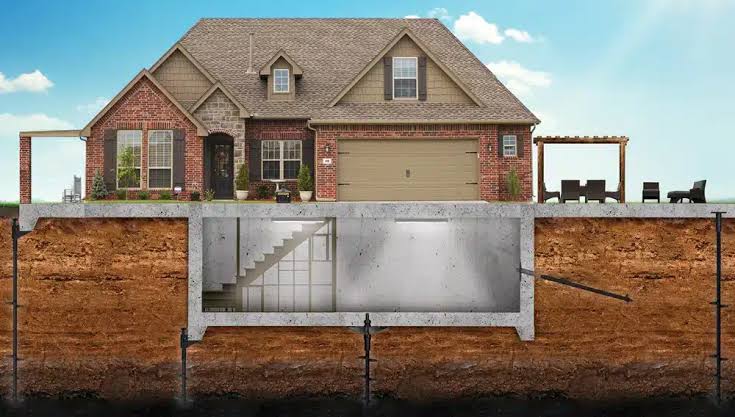In Charlotte, homes are often subjected to various environmental factors such as soil shifts, moisture variations, and even the occasional settling. These conditions can lead to foundation problems, causing issues like cracks in the walls, doors that won’t close properly, and uneven floors. When this happens, it may be time to consider installing helical piers. These sturdy, screw-like devices are used to stabilize foundations and provide long-term support for homes. This article explores when Charlotte homes need helical pier installation, the signs that indicate this need, and the installation process.
Recognizing The Signs: When Charlotte Homes Need Helical Piers
Helical piers are typically installed when foundation problems threaten the stability of a home. Homeowners in Charlotte should be aware of a few key signs that indicate it’s time to consult a professional about helical pier installation.
1. Cracked Walls And Floors
The most obvious indicator that a home may need foundation support is the appearance of cracks in the walls and floors. As a house settles unevenly, it can cause structural shifts that manifest as vertical or horizontal cracks. These cracks, especially if they continue to widen, are often a sign that the foundation is sinking or shifting in response to changes in the soil beneath it.
2. Uneven Or Sloping Floors
If floors begin to slope or become noticeably uneven, it could point to a foundation issue. The foundation of older homes may have weakened, making this a major worry. When the weight of the home becomes too much for the soil beneath to support, uneven settling occurs, leading to floors that are no longer level.
3. Sticking Doors And Windows
Another common sign that your home may need helical piers is when doors or windows start to stick or fail to close properly. This happens when the foundation shifts and causes the frame of the house to become misaligned. The issue can be especially noticeable in door frames or window sills that are no longer flush with the surrounding walls.
4. Foundation Shifting
Foundation shifting, such as sinking or tilting, can also be a red flag. This may happen gradually over time, with one or more corners of the house slowly lowering. It is often difficult to notice without a trained eye, but any visible changes in the home’s alignment should be taken seriously.
When these issues begin to surface, homeowners in Charlotte should act quickly to assess the extent of the damage and determine if helical piers are needed to prevent further problems.
The Installation Process Of Helical Piers
Helical piers are precisely installed to strengthen the foundation and avoid settling. A professional contractor specializing in foundation repair typically handles this process. Here’s an overview of the installation procedure:
1. Assessment And Inspection
Before installing helical piers, a thorough assessment of the home’s foundation is necessary. This usually involves inspecting the walls, floors, and overall structural integrity of the home. Professionals may use tools like levelers to check the slope of the floors and assess how much settlement has occurred.
2. Torque Rating And Load Calculations
One of the critical steps in the installation process is determining the correct torque rating and performing load calculations. Torque rating refers to the amount of force required to drive a helical pier into the ground, and this is an essential factor in ensuring the pier will support the weight of the house. Load calculations help determine the necessary load-bearing capacity of each pier, ensuring the structure will remain stable even under extreme pressure.
3. Pier Installation
Once the calculations are completed, the contractor will use specialized machinery to screw the helical piers deep into the ground. The piers are designed to reach stable soil layers that can provide the necessary support for the foundation. The piers are often placed at strategic points around the perimeter of the home to address the most affected areas.
4. Adjusting And Connecting
After the piers are installed, the foundation is lifted, if needed, to return it to a level position. This is done carefully to avoid any additional damage to the structure. Once the foundation is leveled, the piers are securely connected to the home’s foundation, ensuring a stable and long-lasting solution.
5. Final Inspection And Testing
A final examination ensures that the piers are properly installed and the foundation is sturdy. Testing may involve ensuring that the piers are holding the expected amount of weight and that no further shifting occurs.
Warranty Coverage For Helical Piers
One of the major benefits of installing helical piers in Charlotte homes is the warranty coverage. Most professional contractors offer warranties that cover the performance of the piers for an extended period, often ranging from 25 years to a lifetime. These warranties usually cover pier failure and foundation shift repairs. Warranty coverage offers peace of mind, ensuring homeowners that their investment in foundation stabilization will remain protected.
Conclusion
When Charlotte homes experience signs of foundation issues, such as cracked walls, uneven floors, or shifting windows, it may be time to consider helical piers. The installation process involves careful planning, including torque ratings and load calculations, to ensure the piers can properly support the structure. With the added benefit of warranty coverage, helical piers provide a reliable and long-term solution for stabilizing foundations and preventing further damage. If you sense foundation problems, visit an expert to see if helical piers are ideal for your home.


